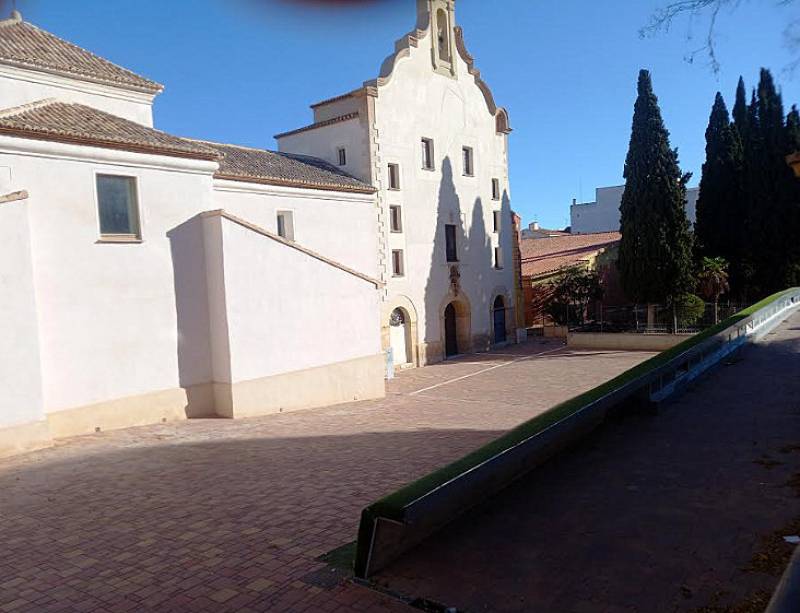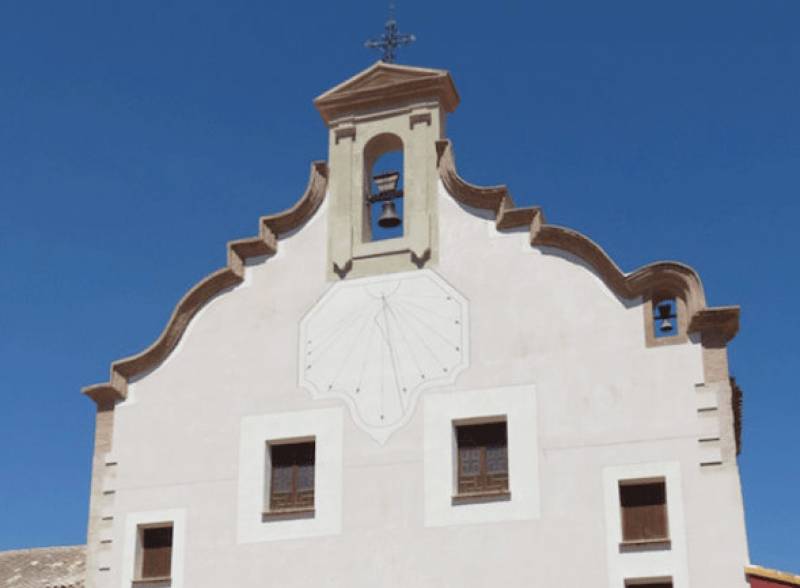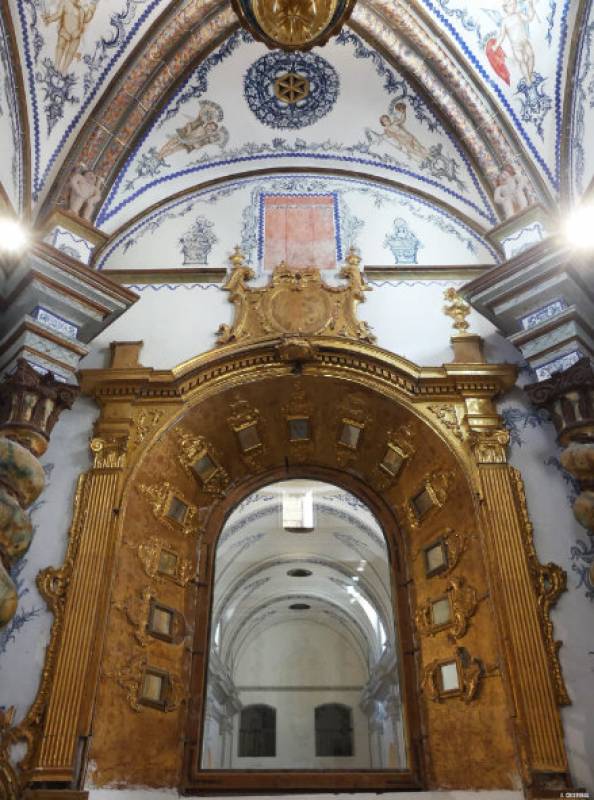Contact Yecla Tourist Office
Click Here
To contact Jumilla Tourist office please use the secure enquiry form provided below.
Contact Yecla Tourist Office on +34 968 75 41 04
Contact Yecla Tourist Office
Click Here
To contact Jumilla Tourist office please use the secure enquiry form provided below.
Contact Yecla Tourist Office on +34 968 75 41 04


 The restored church of San Francisco in Yecla and the Chapel of the Virgen de las Angustias, which is an annex of the main building, stand on the northern side of the Parque de la Constitución in Yecla, on Calle Camino Real, and date from the 16th and 17th centuries.
The restored church of San Francisco in Yecla and the Chapel of the Virgen de las Angustias, which is an annex of the main building, stand on the northern side of the Parque de la Constitución in Yecla, on Calle Camino Real, and date from the 16th and 17th centuries.
When it was built by the Franciscan order of monks the church was, according to some historians, the seed from which the current town of Yecla eventually grew. This building, along with the earlier Iglesia de la Asunción (1512-1540, now known as the Iglesia Vieja), formed a central axis along which the town has expanded since, and the Parque de la Constitución is a public garden located on part of the land which used to belong the Franciscans.
History
 Until the late 16th century the Franciscan order used the small church known as the Ermita de la Magdalena in the foothills of the mountains approximately 3 kilometres from Yecla, but in 1582 they began the move into their new monastery in the northern outskirts of the town. This was a lengthy process due both to the scale of the project and the need to fund it, and much of the manual labour fell to the monks themselves, but they finally completed their new home in 1612.
Until the late 16th century the Franciscan order used the small church known as the Ermita de la Magdalena in the foothills of the mountains approximately 3 kilometres from Yecla, but in 1582 they began the move into their new monastery in the northern outskirts of the town. This was a lengthy process due both to the scale of the project and the need to fund it, and much of the manual labour fell to the monks themselves, but they finally completed their new home in 1612.
The large bell gable which stands at the top of the façade was added in the early 18th century and in 1725 permission was granted to build a chapel dedicated to the Virgen de las Angustias as an annex to the monastery church. This was completed in 1746.
 The next addition came in 1777, when Cristóbal Azorín Amaya was allowed to install his coat of arms on the main altar screen and to be buried in the nave when he died, in recognition of his having paid for the gold leaf on the altarpiece, the new image of San Francisco and the figure of San Cristóbal, among other decorative elements.
The next addition came in 1777, when Cristóbal Azorín Amaya was allowed to install his coat of arms on the main altar screen and to be buried in the nave when he died, in recognition of his having paid for the gold leaf on the altarpiece, the new image of San Francisco and the figure of San Cristóbal, among other decorative elements.
In 1836, though, the Franciscan Order was suspected of having collaborated with the forces of the Carlists, who disputed the monarchy of the House of Bourbon and proposed a different line of succession, and this resulted in them being expelled from their monastery. The building lay empty for a number of years, until in the late 1850s the architect Jerónimo Ros Jiménez designed a new one which made use of part of the existing one. The resulting premises were handed to the “Padres Escolapios” (the Piarists), who formed a school named the Colegio de Escuelas Pías y de la Iglesia.
Like many other religious buildings throughout Spain, the Iglesia de San Francisco was a target for opponents of the Catholic Church during the Spanish Civil War, and in 1936 most of its works of religious art were lost in a fire. The Chapel devoted to the Virgen de las Angustias was walled in to preserve the figure of the Virgin, and it remained so until the end of the war in 1939: in the meantime, the church was used as a weapons and truck store, and the Camarín de San Pascual served as a kitchen where the wood of the religious decorative statues and other elements was used as fuel.
 Eventually the building deteriorated to such a state that in 1968 the image of the Virgen de las Angustias (by master sculptor Francisco Salzillo) was transferred to her chapel in the Basílica de la Purísima, and the following year the Piarist school was demolished in order to avoid its total collapse, although a new school was built in its place.
Eventually the building deteriorated to such a state that in 1968 the image of the Virgen de las Angustias (by master sculptor Francisco Salzillo) was transferred to her chapel in the Basílica de la Purísima, and the following year the Piarist school was demolished in order to avoid its total collapse, although a new school was built in its place.
The church was finally closed in 1972, and a decade later both the church and the Chapel were declared Monuments of Cultural Interest. It was not until 2014 that restoration work was completed, and in April of that year it became one of the many cultural venues in Yecla.
Architecture and works of religious art
The main south-facing façade is the stand-out exterior feature of the Iglesia de San Francisco in Yecla, and provides a stark contrast to two others of the most recognizable buildings in the city: whereas the Basílica de la Purísima is known for its blue and white dome and the Iglesia Vieja features and ornate tower, this former place of worship is topped by an impressive bell-gable, which originally helped to make the church more visible from elsewhere in the town.
 The façade also features various rectangular windows, the larger of which illuminate the choir inside.
The façade also features various rectangular windows, the larger of which illuminate the choir inside.
Inside, the church’s unusual decorations include Solomonic spiraled baroque columns and tiled wall decorations, especially in the Camarín (the small chapel above and behind the main altar). The same is true of the Chapel of the Virgen de las Angustias, where the tiling work belongs to the school of Valencia, and this chapel was in fact a small independent church.
The works of art housed in the Iglesia de San Francisco and the Capilla de la Virgen de las Angustias were mostly lost during the Civil War, including various figures created by the sculptors Juan Sánchez Cordobés, Ignacio Vergara and José Esteve Bonet and paintings by José Vergara. However, there are still some wall paintings on the right of the presbytery, and the decoration of the Camarín de las Angustias was created by Ignacio Castell Pérez between 1754 and 1757.
 Similarly, an image of St Francis of Assisi painted by Benito Espinós around 1775 is still here, and there are various wall paintings showing St Francis, San José, San Antonio and San Ildefonso. These paintings are signed by Juan Fernández in the year 1747, and the same artist is responsible for the decorations of the pendentives with the images of the four Evangelists, and the ceiling decorations which feature San Elceario, Santa Delfina, Santa Margarita de Cortona, San Roque and Santa Rosa de Viterbo.
Similarly, an image of St Francis of Assisi painted by Benito Espinós around 1775 is still here, and there are various wall paintings showing St Francis, San José, San Antonio and San Ildefonso. These paintings are signed by Juan Fernández in the year 1747, and the same artist is responsible for the decorations of the pendentives with the images of the four Evangelists, and the ceiling decorations which feature San Elceario, Santa Delfina, Santa Margarita de Cortona, San Roque and Santa Rosa de Viterbo.
The tiling around the Camarín shows six scenes from the Passion of Christ (the prayer in the Garden of Gethsemane, the crown of thorns, Christ in the Sanhedrin, the Adoration of the Cross, the Crucifixion and the Flagellation) and was created at the workshop of Vicente Navarro in Valencia.
Address: Calle Camino Real, nº 1, Yecla (click for map)
If visiting Yecla don’t forget to make sure one of your first ports of call is the tourist office (Plaza Mayor, 1, telephone 968 754104, email turismo@yecla.es).
For more local events, news and visiting information go to the home page of Yecla Today.